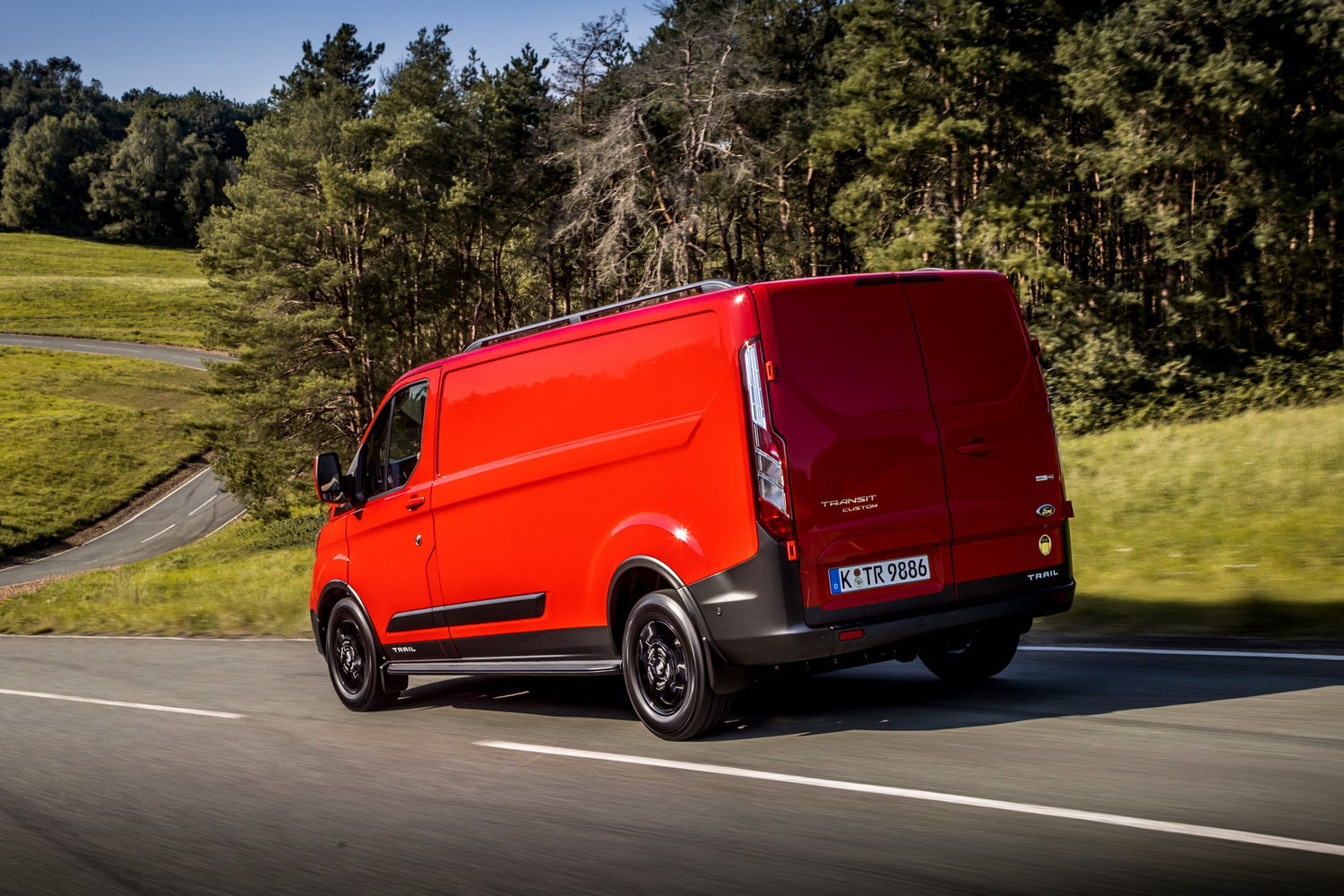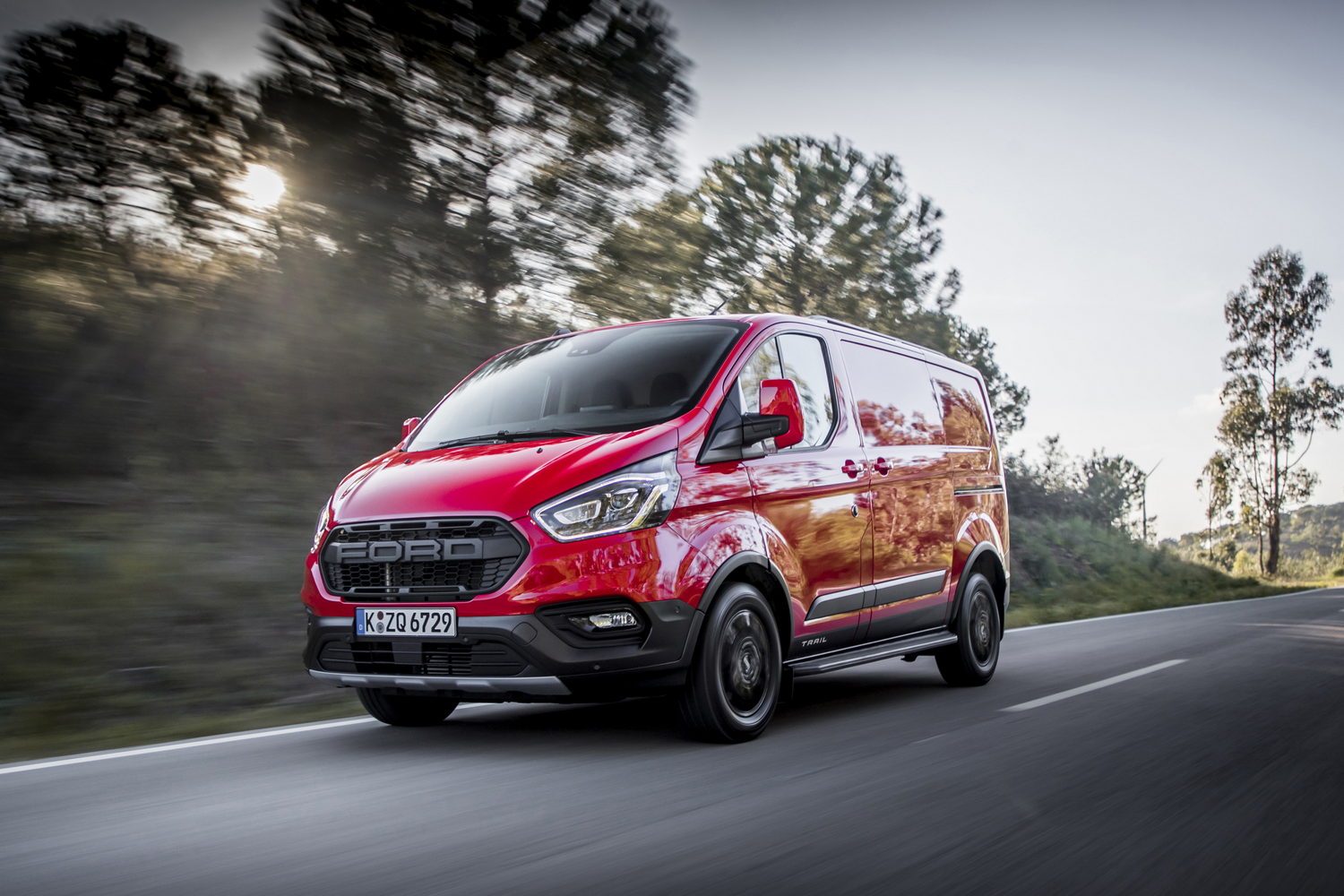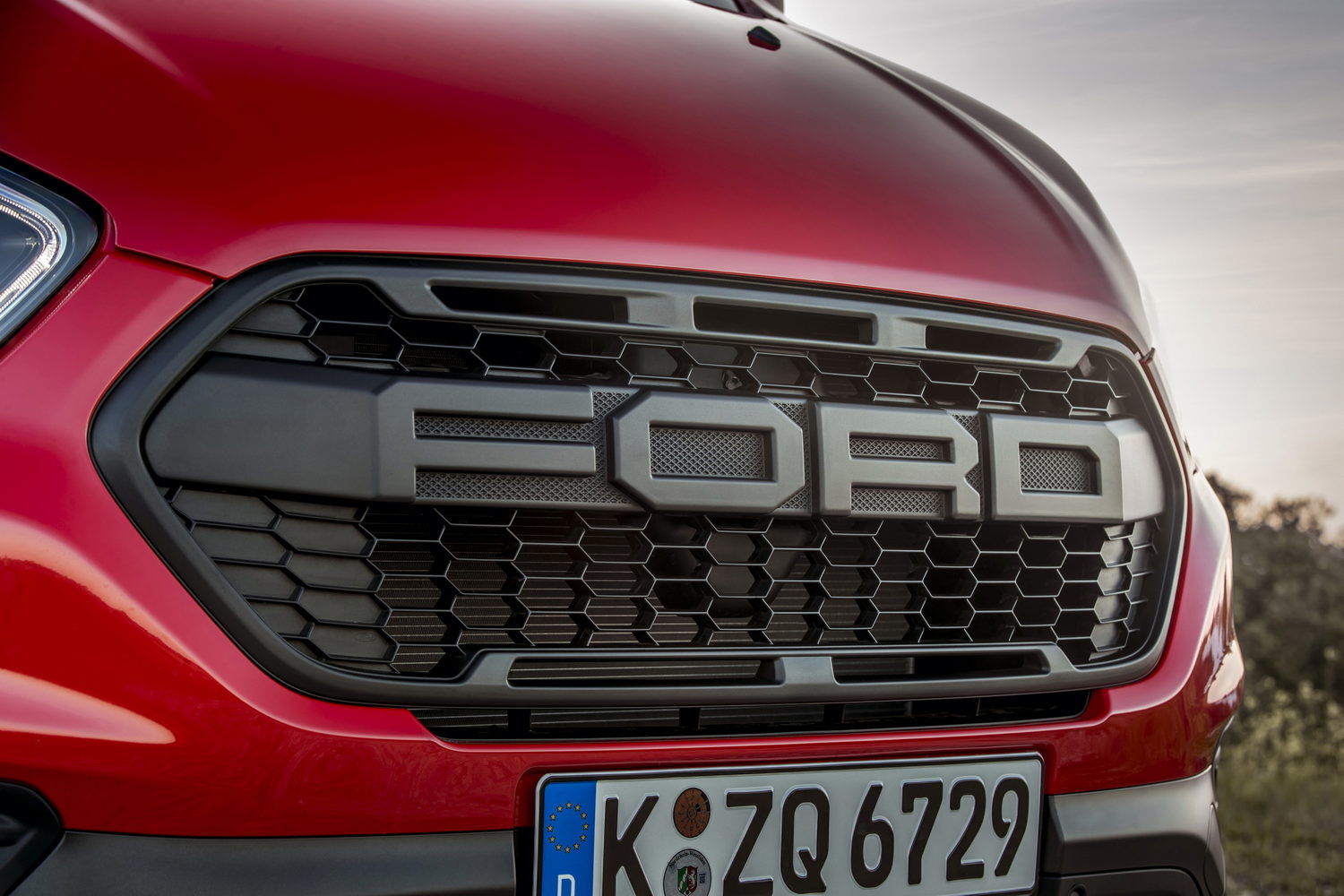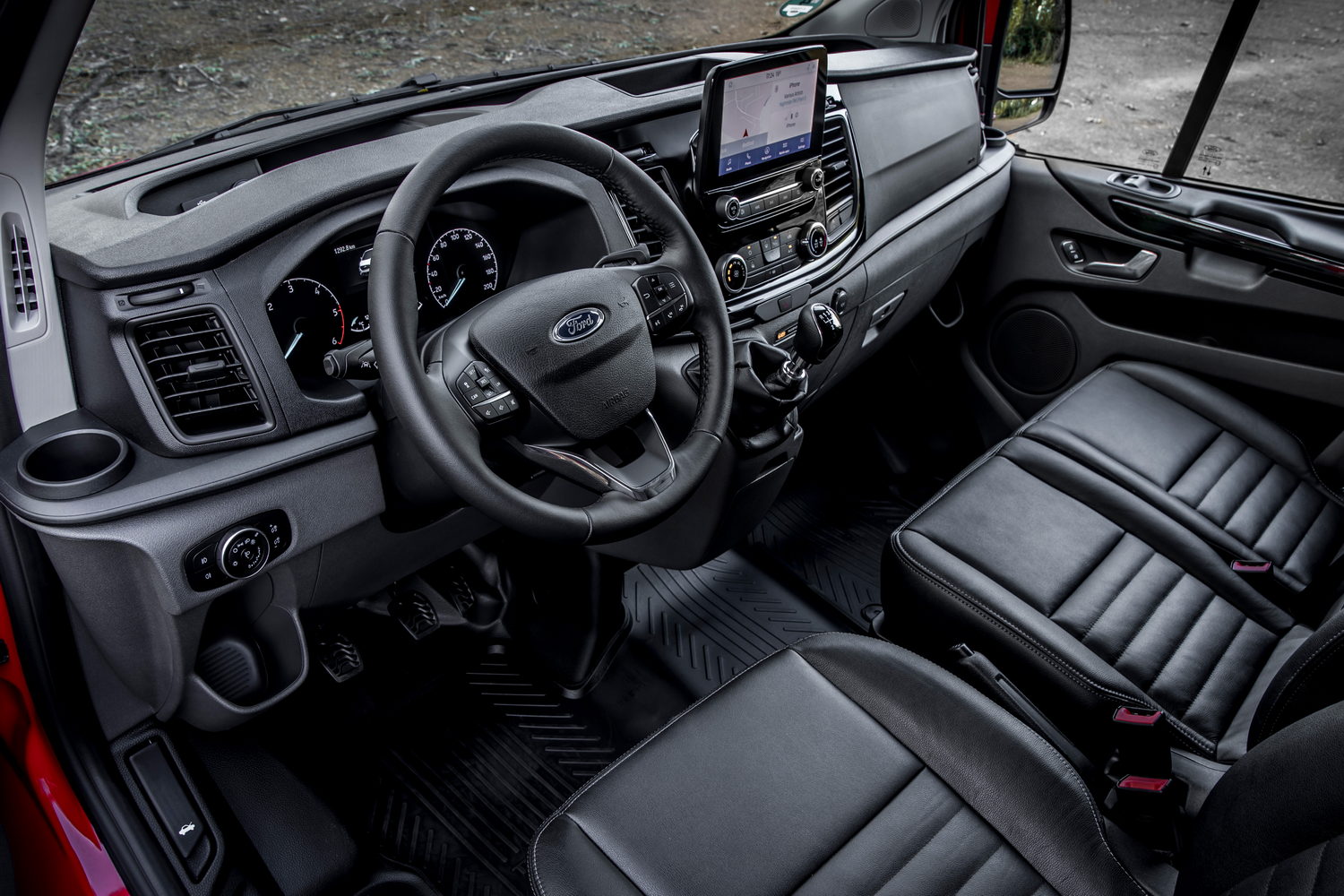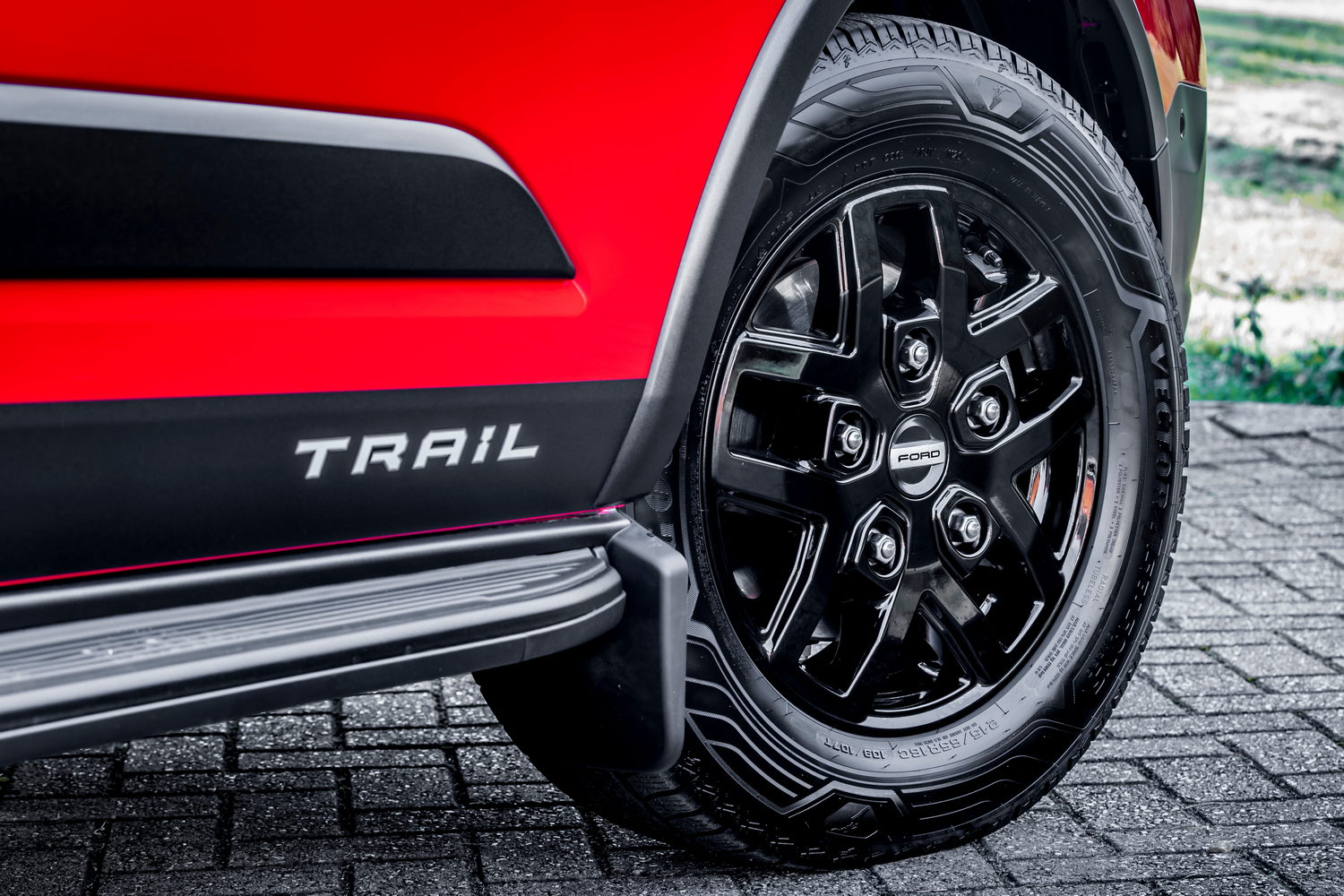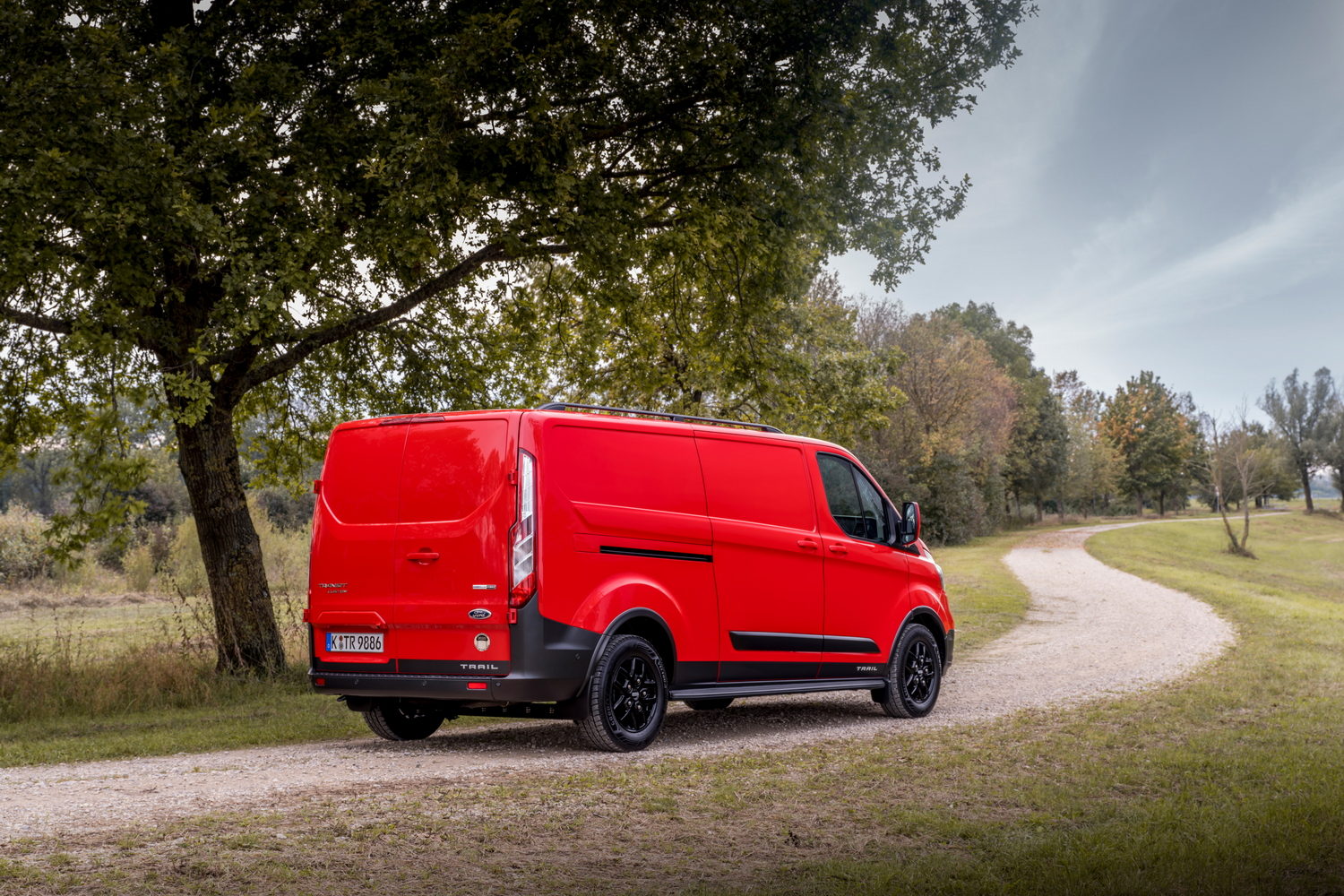Ford Transit Custom Trail overview
If you don’t know what a Transit is, then you don’t know vans. Since 1966, the Transit has been the acme of delivery vans, whether it’s small city-friendly short-wheelbase models, massive Luton-top house-movers, or even sporty versions with Ford racing bonnet stripes. There’s a Transit for every need, and indeed every personality.
Now, Ford is trying to add a little off-road ruggedness to the Transit line-up with this new Trail model, though it’s only available with front-wheel drive. It does get a new limited slip front differential, developed with powertrain experts Quaife, to aid grip-finding on loose surfaces. If the differential detects that one wheel is slipping and sliding, it can reduce power to that wheel, and send it to the wheel that has grip. It’s a simple, light and space-efficient route to offering a little more rough-ground capability, without the extra expense and weight of four-wheel drive.
You’ll also spot a Transit Trail thanks to the black body cladding plastic panels around the lower reaches of the bodywork, and the large Trail badges scattered about. There’s also 16-inch alloy wheels and a chunky grille, reminiscent of that used by the Ranger Raptor pick-up, with the Ford name spelled out in big block capital letters. Inside, there’s standard leather upholstery for the three-seat cabin, plus a ‘Quickclear’ heated windscreen, power folding door mirrors, auto lights and wipers, a touchscreen infotainment with Ford’s ‘SYNC3’ software, part digital instruments and front and rear parking sensors.
Trail models come with either 130hp, 170hp, or 185hp versions of the 2.0-litre EcoBlue four-cylinder diesel engine, and it’s the mid-level 170hp power output version that we’re testing here.
Ford Transit Custom range
The Transit Custom model range is, quite simply, huge. As standard, there is a choice of two wheelbase lengths (2,933mm or 3,300mm), two overall roof heights (1,925mm or 2,366mm) and those can be mixed and matched as you like. You can also choose from three-seat panel van, double-cab in-van six-seat layout, or full minibus ‘Kombi’ layouts, while there are six different trim levels — Leader, Trend, Trail, Limited, Active and Sport Van.
Standard equipment on a basic Leader panel van includes a stereo with Bluetooth phone connection, rake and reach adjustable steering wheel, electric windows, a single sliding cargo side door, driver’s seat armrest, three-seat layout, a trip computer, two 12-volt cabin sockets, a steel bulkhead with a load-through slot, electronic roll stability control, stop-start and a heavy-duty alternator.
Prices for that basic Leader model, with a 105hp 2.0-litre EcoBlue turbodiesel engine, start from €27,143 including VAT.
Our Trail test car clocked in at €37,820 including options. Those options were a blind-spot monitoring system, a technology pack that included an eight-inch touchscreen, adaptive cruise control, navigation, online connectivity through the FordPass setup and speed sign recognition.
Ford Transit Custom Trail interior
The Transit Trail doesn’t get any special cabin additions compared to the regular Transit Custom, so it’s the same wide, roomy, three-seat layout that will be familiar to many. Overall quality levels are very good, so you can expect your Transit Trail to be able to cope with quite a bit of daily abuse. The dashboard is well laid out, with clear main analogue dials and a useful digital screen between those. That can display your trip computer readout, or allow you to set up the van’s driver assistance systems, but we usually left it set to show the digital speedometer.
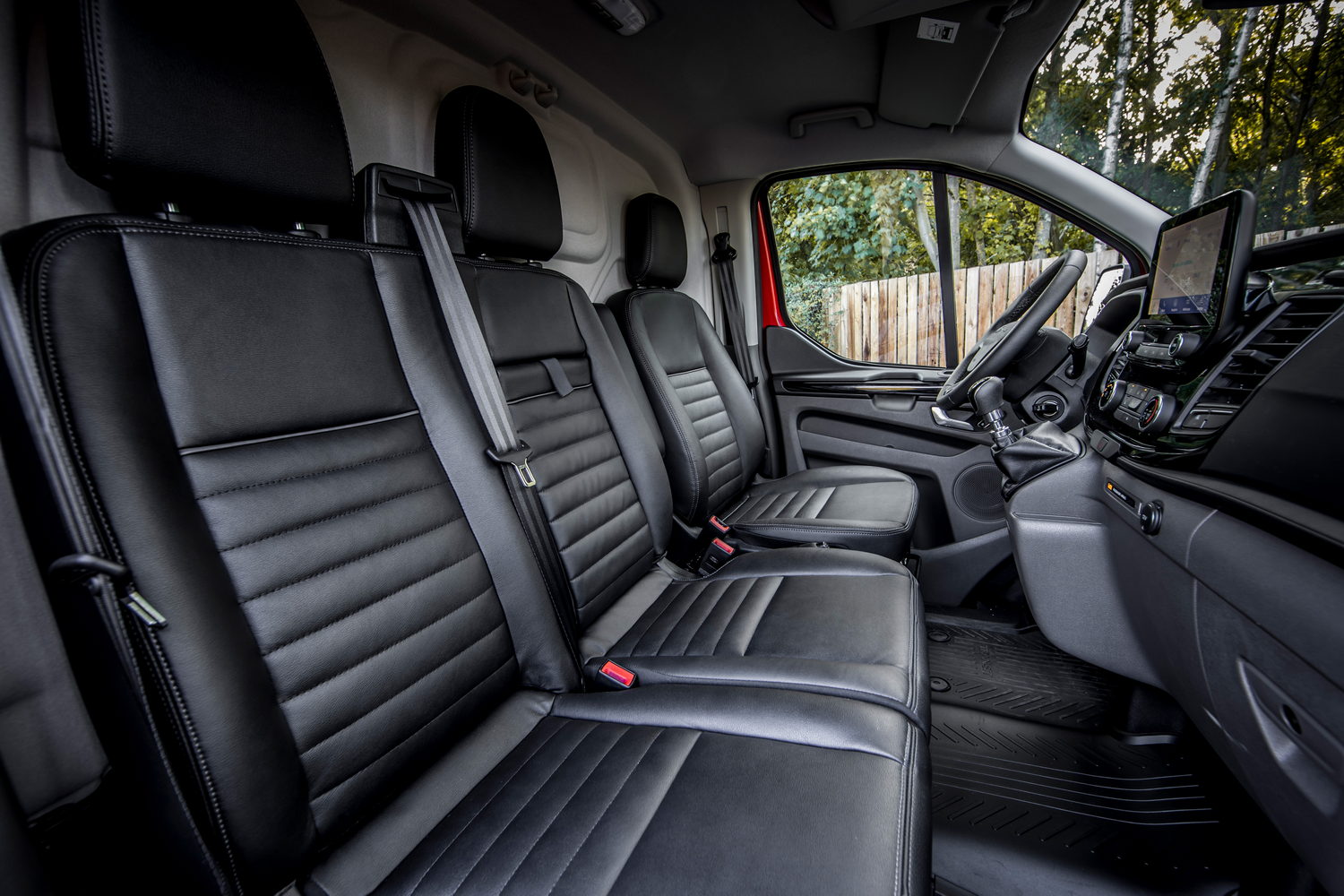
In the centre, the optional eight-inch touchscreen is well worth getting, as it makes shuffling through the Transit’s various electronic functions so much easier. The SYNC3 software used isn’t the most up to date, but it’s simply laid out, and far more robust in our experience than that offered by some rivals — there were no stutters nor glitches when moving between menus and functions, for example. Phone connectivity is made easy thanks to a USB-A socket just below the screen, and there’s a 12-volt adaptor socket right next to that. Beneath the screen, the heating and ventilation controls come from the Ford Focus hatchback, and are very straightforward to use.
There is lots of storage space — on top of the dash are three big, deep storage areas, with another smaller one just behind the touchscreen. On the driver’s side, the storage tray includes another 12-volt socket, and another USB-A socket. The lockable glovebox on the passenger’s side is also a decent size, and there are two large cupholders — one on each side of the dash-top, at the outer edges — and two large water bottle holders — one down by the driver’s right leg, the other down by the outer passenger’s left leg, both angled slightly to allow a bottle to lie down a little, making it less likely to fall out. There are also big door bins, split into three levels — a large, central bin and two shallower bins above and below that — and another lidless storage area on the passenger’s side, above the glovebox. Finally, there’s another fold-out cupholder below the gear shifter. The back of the central seat also folds down to form an armrest, which contains two slightly shallow cupholders, a small storage tray and an elasticated strap that is useful for holding sheafs of paperwork.
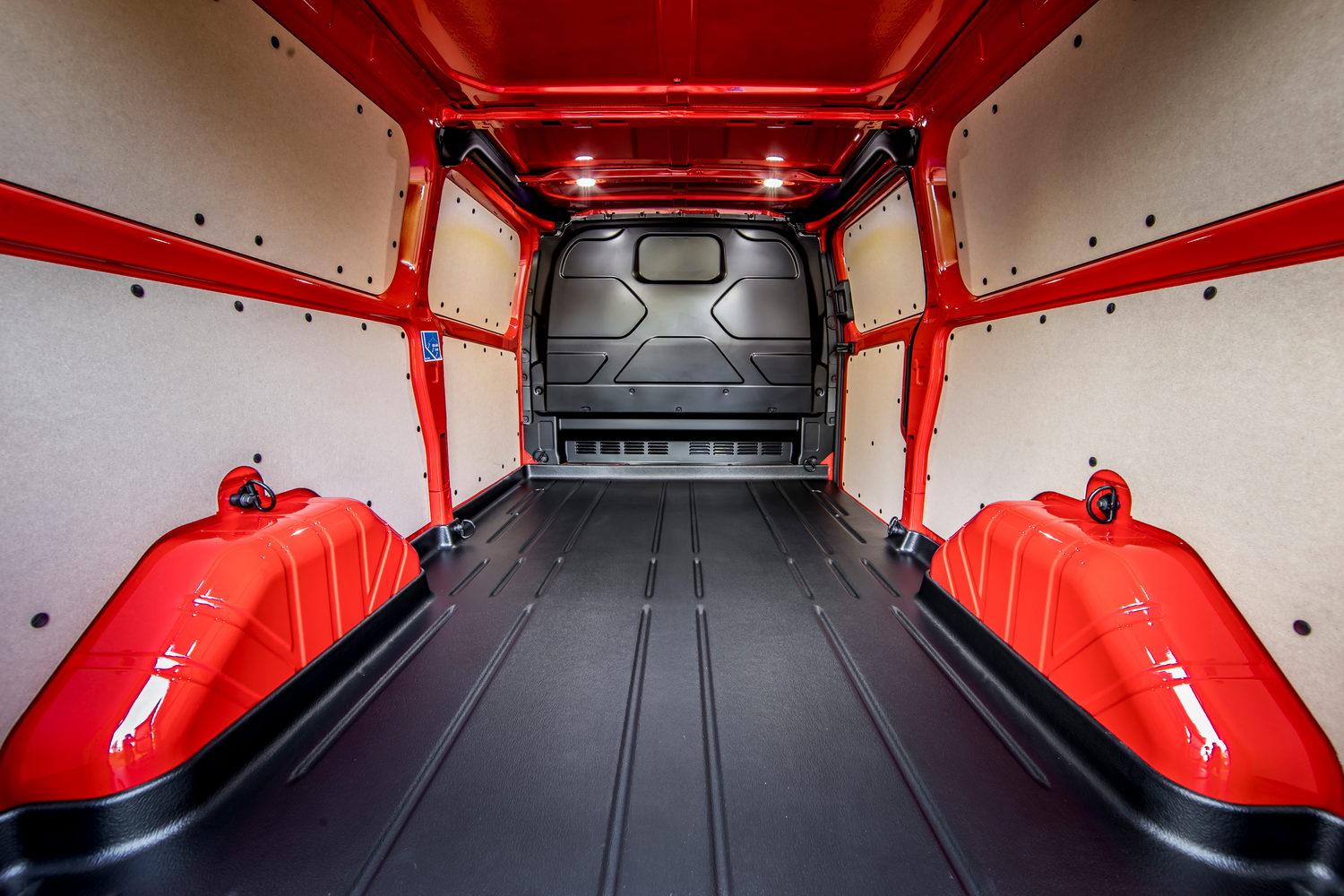
The driver’s seat is broadly comfortable, but we found that it was slightly difficult to set up a truly comfortable driving position, mostly because the bulkhead prevents you reclining the seat back quite as much as you might like, forcing you into a too-upright position. Some might be fine with that, but it’s worth checking out before making any final purchasing decisions, as many users will be spending the greater part of a day in their van.
Ford Transit Custom Trail driving experience
The Transit Trail’s EcoBlue 2.0-litre engine, in 170hp form, is a really impressive unit. Power and torque are more than competitive, and you can keep up quite a decent clip across country, helped by the slick shift action of that six-speed gearbox. It’s also impressively refined, so you won’t find yourself getting overly tired on a longer haul, and it helps that, aside from some wind noise around the mirrors, cabin noise is well suppressed. The wind roar around those mirrors is well worth it, considering what a good field of vision they give you, incidentally.
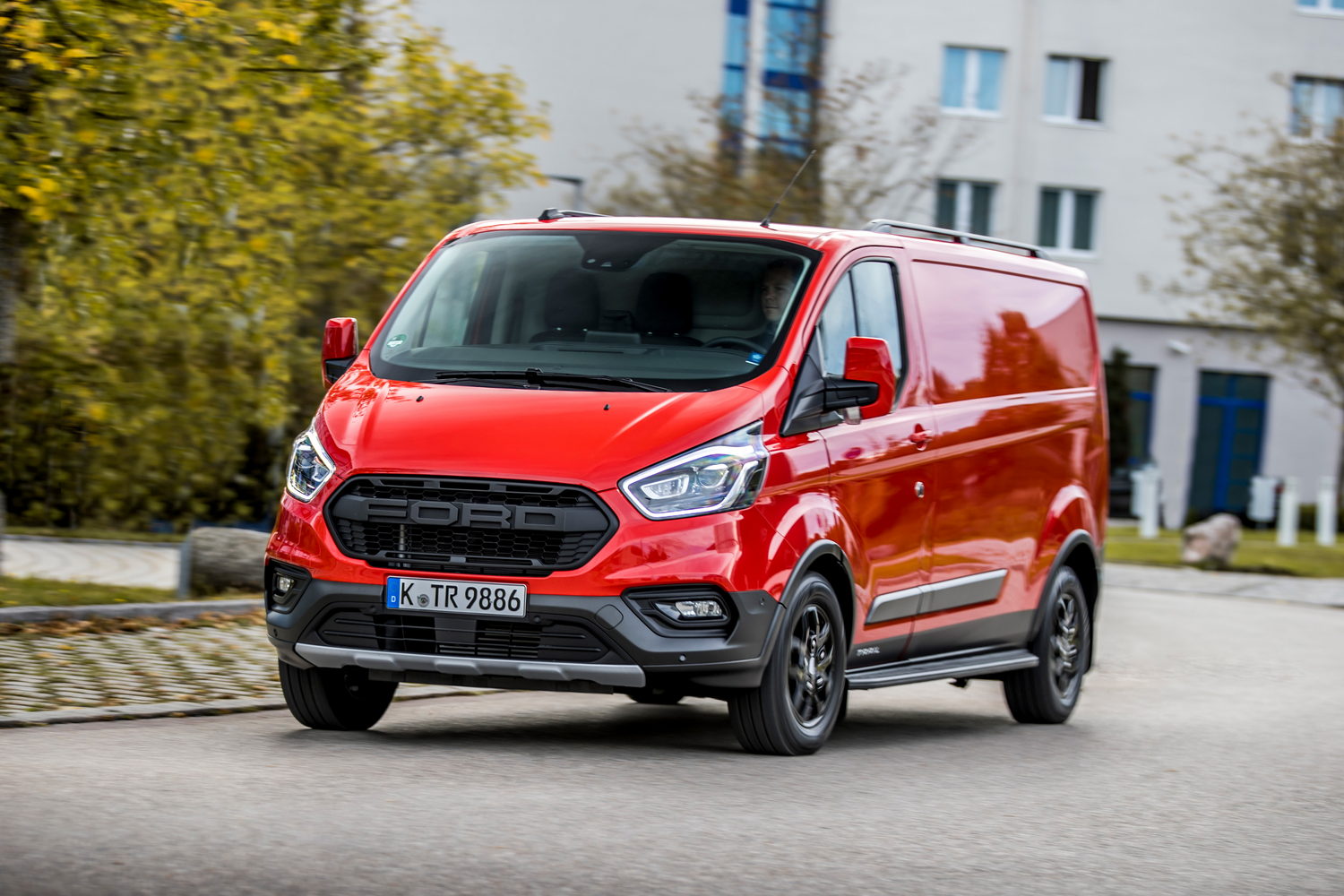
The Transit’s steering is light, a little rubbery in feel, but accurate and allows you to place the van with confidence on the road. Body lean, unladen, is well-contained, but it’s best not to rush too quickly into tighter corners, as you’ll find the nose pushes wide very easily. Ride comfort is fine and the Transit copes well with most road surfaces.
What about off-road surfaces, though? This is the Transit Trail after all, so how effective is that mechanical limited slip differential (mLSD)? The answer is, only partially effective, in spite of the standard-fit all-season tyres. The Trail has the same ride height as a regular Transit but that’s enough to allow it to tackle uneven ground with space to spare. The mLSD works generally quite well on loose surfaces, or on slippery grass, helping the front wheels to sniff out traction when things get slippery. However, we found that on one steep, grassy ascent the differential just couldn’t find enough traction to get the Transit to the top. OK, so it was quite a tall section, with damp grass (which is a far more slippery surface than you’d think — only sheet ice is worse for traction), but it was a bit of a disappointment that we couldn’t get the Transit Trail up and over. Doubtless, the Trail with optional four-wheel drive would have done it.
Ford Transit Custom Trail alternatives
You can have the current ‘6.1’ version of the Volkswagen Transporter with 4Motion four-wheel drive, but it’s a pricey option, only available with the top-spec 150hp 2.0-litre TDI engine, which notably has less power and less torque than this Transit Trail. It is very good at tackling serious off-road sections, though, so has more capability all-round than this front-wheel-drive version of the Trail.
Peugeot’s Expert, Citroen’s Dispatch, and Opel’s Vivaro vans — all based on the same platform and using the same 1.5- and 2.0-litre HDi diesel engines, as well as all-electric versions — can be optionally had with a ‘Grip Control’ traction control system. This allows the driver to select different modes for the electronic traction control, to best deploy on gravel, grass, sand, or snow. It’s an effective system, but like the mechanical differential of the Transit Trail, limited in that it can only control two wheels, not four. Oddly, the Toyota Proace, which is mechanically related to the Citroen, Peugeot and Opel trio, doesn’t offer the Grip Control system.
Of course, if you want to tackle serious off-road environments, you could just go for Ford’s own Ranger pickup. It’s not as versatile when it comes to carrying loads as the Transit is, but it’s deeply talented at dealing with proper muck, mud and rocks and comes with four-wheel drive (including a low-range transfer box as standard) on all models.
Ford Transit Custom Trail Summary
In this form, the Transit Trail is a slight disappointment. It has chunky, handsome looks on its side, but does anyone really buy a panel van based on looks? Likewise, it has a very good, well-laid out cabin that’s refined on a longer journey, but you could say exactly the same about the regular Transit Custom. Ultimately, the Transit Trail’s extra usability is of only limited use — yes, it will tackle gentle off-roading with a little more aplomb than a standard model, but it can’t cope with serious terrain or anything more than a relatively easy slope. Really, if you need that sort of capability from your van, you need to spend the extra and upgrade to the full-on four-wheel-drive Transit Trail instead.
